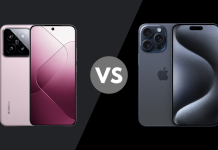Since its foray into the Indian market in 2014, Xiaomi has made tremendous progress in that terrain. The rise of the company known as the “Apple” of China, underscores the business model it operates, in terms of offering premium models at an affordable price, fits the needs of the middle class and low-income earners. The growth was so dramatic that by 2017, Xiaomi was already contending with Samsung who sat at the helm of the market for quite a while. Xiaomi even succeeded in shipping more phones in one of the quarters but that wasn’t enough to equal Samsung’s 24% market share. 
However, data from market research firm Counterpoint shows that Xiaomi may have finally beaten Samsung to the crown as the number one smartphone vendor in India for 2018. Counterpoint’s data showed that Xiaomi has an estimated 28% market share, a leap from the 19% recorded in 2017. On the other hand, Samsung experienced some stagnation in its growth as its market share remained at 24% just like the previous year. The rest of the top 5 smartphone vendors also saw their growth stagnated YoY. On the other hand, other smartphone makers not on the top 5 equally had a reduction in their shipment from 34% in 2017 to 25% market share in 2018. Considering the stagnant growth of Samsung and the other three brands of Vivo, OPPO and Micromax, it is safe to say that the smaller OEMs are hit the most by Xiaomi’s rising market share.
In total, 330 million smartphones were shipped in India last year and smartphones only accounted for 44% of this figure. The rest of the shipments were feature phones which still sells hot in India. In the feature phone segment, Jio maintained a wide lead with a tremendous 38% market share as against 11% in 2017. Samsung slumped fro 21% share of the market to 12%. Other brands in the top 5 include iTel, Nokia (with a slight 2% growth YoY) and Lava.
Read Also: Xiaomi India celebrates 5th anniversary with massive discounts on smartphones
Xiaomi is expected to consolidate on this lead in India with its Pocophone and Redmi brands alongside the Mi brand. In the same vein, Samsung will be looking to reclaim lost ground with the launch of several powerful and affordable midrange models such as the new Galaxy A series models.
(source)







